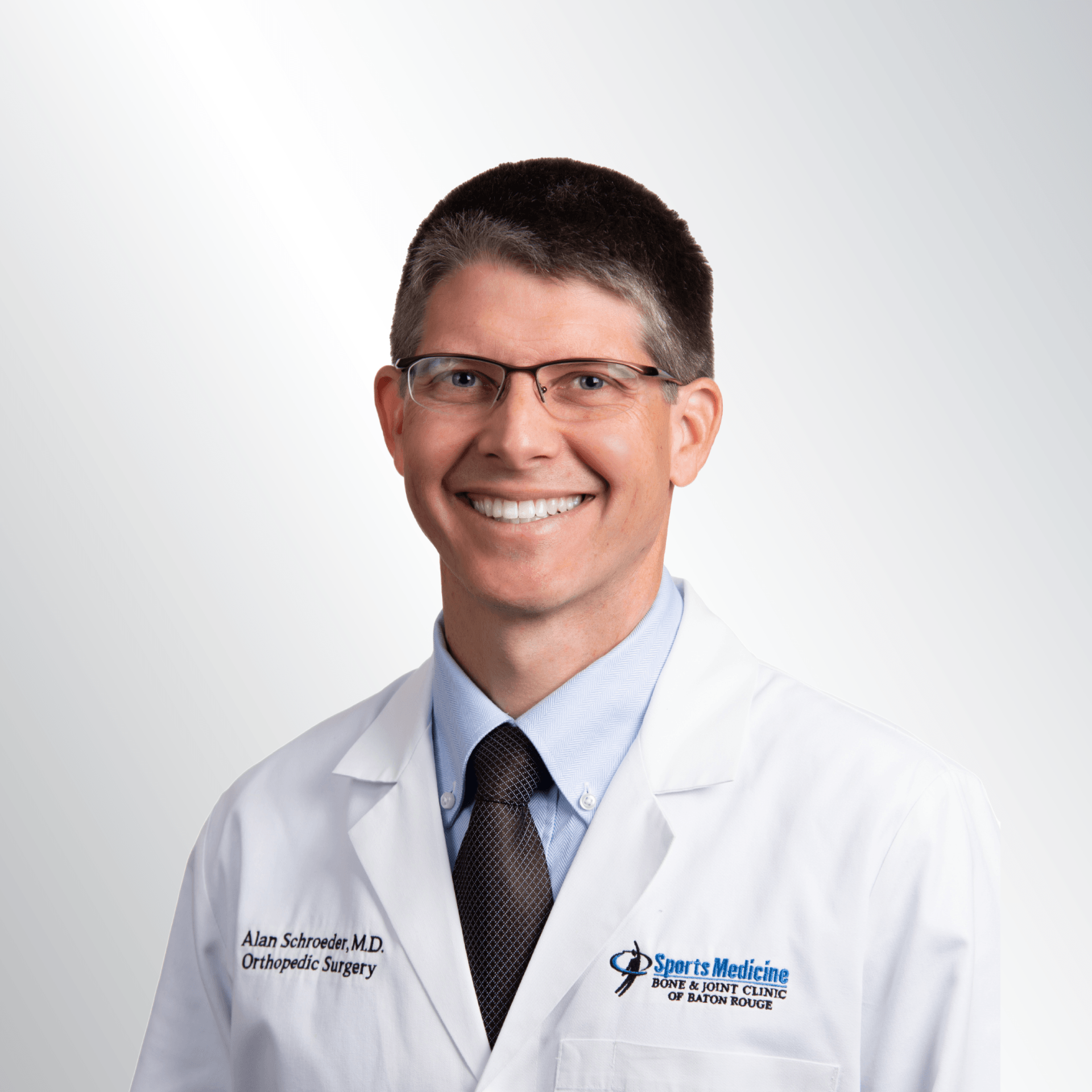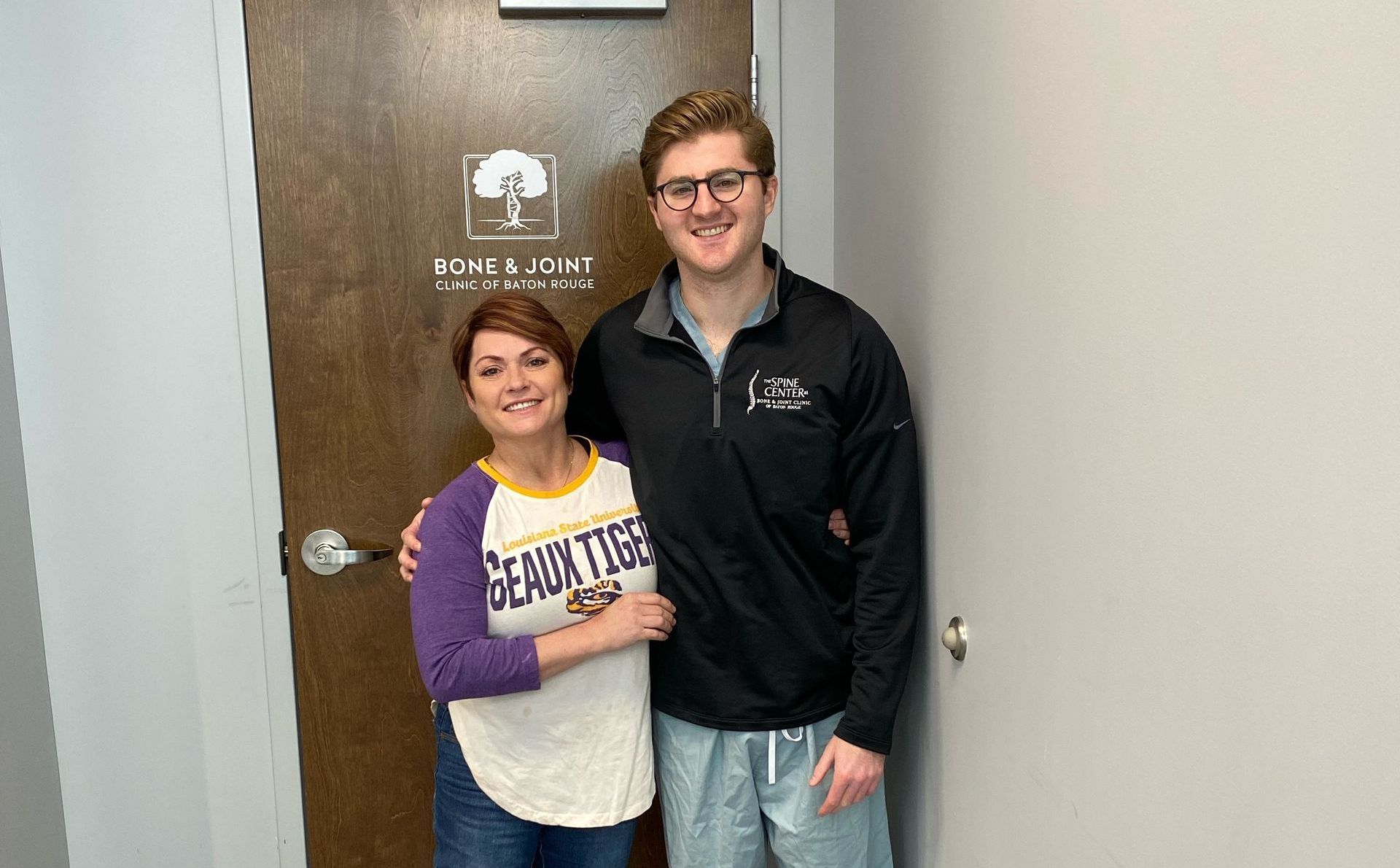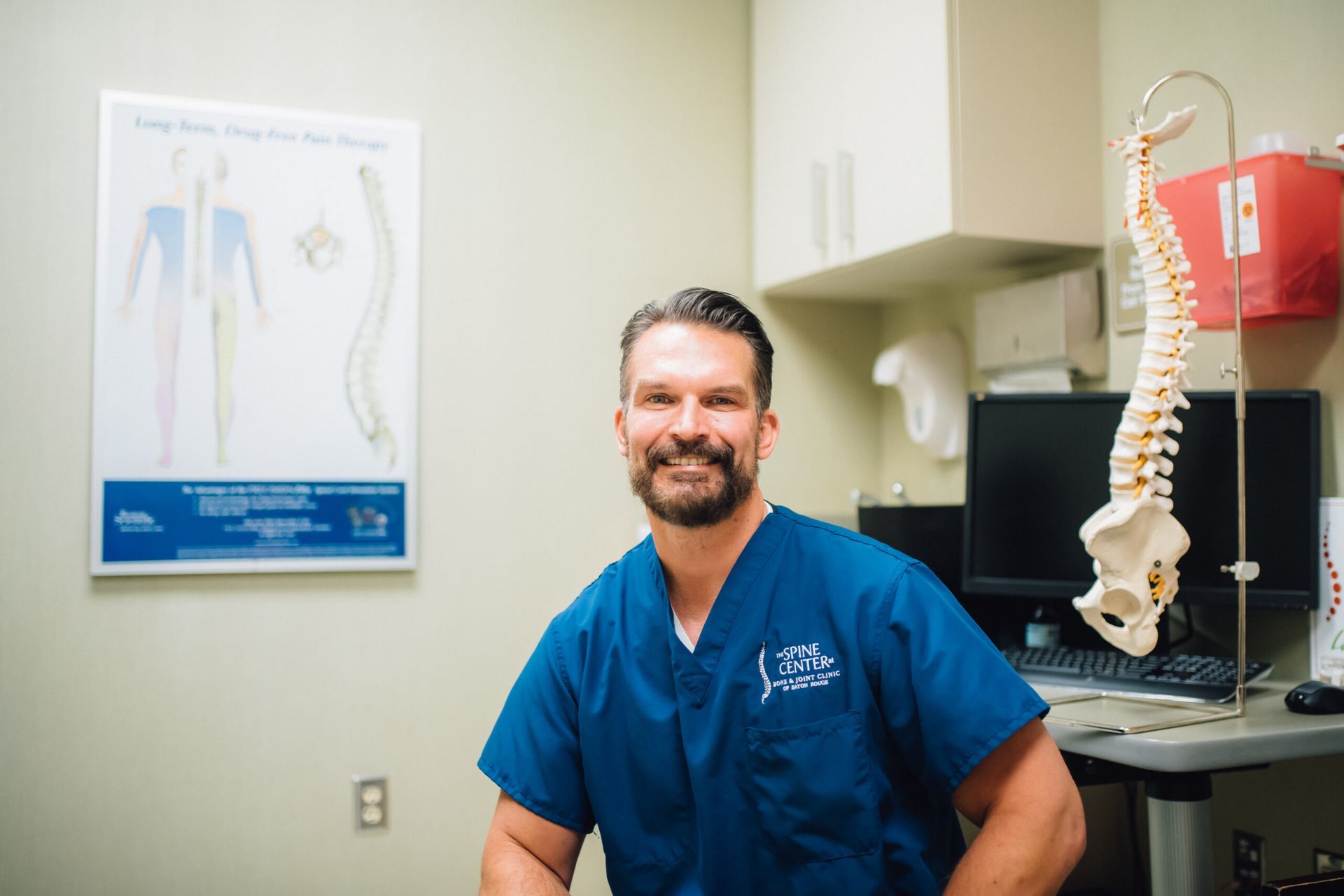Spine Surgery Baton Rouge
Overview of Spine Surgery
While as much as 80% of the American population will suffer from back pain to some degree, a much smaller percentage will go on to have spine surgery to address their condition. The most common area of concern is the lumbar spine, or low back, which accounts for about 500,000 surgeries every year. In total, about $11 billion will be spent annually on spine surgeries, and the results of all of these procedures and money spent will depend largely on the expertise of the surgeon.
What are Common Types of Spine Surgery?
There are several different forms of spine surgeries, each used to address a specific condition or concern. Among the most common are discectomy to remove portions of a herniated disc, laminectomy to enlarge the spinal column and relieve symptoms of spinal stenosis, and spinal fusions to connect two or more vertebrae between which movement is causing pain.
How Soon After Surgery Can I Return to Work?
The recovery process following spine surgery is dependent upon the individual patient and the type of surgery performed. When considering work specifically, we must also take into account the type of job to be performed. Generally speaking, patients whose jobs are more sedentary will return to work far more quickly than those who may be required to perform more physical tasks or heavy lifting. Even still, the timeline will be determined on a case-by-case basis, and it is important to first receive clearance from your surgeon.

Will I Need Physical Therapy After Spine Surgery?
The level of physical therapy needed following spine surgery will be determined on a case-by-case basis. Most patients will only require post-operative physical therapy immediately following surgery, during their hospital stay. However, many patients can greatly improve recovery with preoperative physical therapy, and aquatic physical therapy may be recommended following certain lumbar procedures.
Will I Need to Wear a Back or Neck Brace After Spine Surgery?
While each patient and surgical case is different, a certain amount of bracing can be expected postoperatively. For fusion surgeries of the neck and low back, this generally involves a period of several weeks in a rigid brace, followed by three or four weeks in a softer brace. Non-fusion surgeries will typically involve only the use of a soft brace for several weeks.
How do Epidural Steroid Injections (ESIs) Help Back Pain?
Epidural steroid Injections (ESIs) can help bring relief to back or neck pain caused by the inflammation of nerves. Conditions commonly associated with this inflammation are herniated discs and spinal stenosis. The injection of corticosteroid and an anesthetic numbing agent is delivered directly into the epidural space between the vertebrae where the nerves are housed.
How Long do the Results of an ESI Last?
The results of an ESI are seen as early as 24 to 48 hours; however, some patients may not experience the full benefits for 1 to 2 weeks. How long these results last can vary greatly from one patient to the next. Whereas some will experience relief for several weeks, others may reap the benefits for years.
Are There Risks Associated with ESIs?
While there is a certain level or risk associated with any medical procedure, ESIs are incredibly safe and boast very low complication rates of less than one percent. As long as the procedure is performed by an experienced and skilled physician and patients follow all instructions both leading up to and following the procedure, positive results can be expected. All instructions and any possible complications will be thoroughly reviewed with each patient before their scheduled injection.

How can I Tell if My Child has Scoliosis?
Scoliosis is a sideways curvature of the spine in the shape of an S or C. It is most often seen in children aged 10 to 12 during the growth spurt that occurs just before puberty, and it affects more girls than boys. You can look for signs of scoliosis in your own child by checking for signs of asymmetry. Is one shoulder higher than the other? Have them bend forward and touch their toes. Does one hip or one side of the rib cage appear higher than the other? If you do these tests and still suspect that your child has scoliosis, prompt attention from an orthopedic specialist is crucial for timely and effective treatment.
What are the Advantages of Minimally Invasive Spine Surgery (MISS)?
Minimally invasive spine surgery (MISS) may be used to treat various forms of spinal injury or disease which do not respond to non-surgical treatment methods. MISS utilizes small incisions and special surgical tools such as endoscopes and lasers to allow spine surgery to be performed with minimal disruption to the body and reduced complications. Advantages of MISS over traditional open surgery include less blood loss, less muscle and tissue damage, reduced risk of infection and pain, and quicker recovery times.
What are the Advantages of Endoscopic Spine Surgery?
Endoscopic spine surgery is another form of MISS in which a small incision is used to insert a long, thin tube outfitted with a camera and light (endoscope). This enables the surgeon to best visualize the area they will be correcting. Then, special instruments are passed through the tube and used to perform the surgery. This type of procedure may be used to address complications from herniated discs, spinal stenosis, or arthritis of the spine. It is most often performed in an outpatient setting and offers benefits such as reduced pain and blood loss, minimal disruption to surrounding tissues, and speedy recovery times.
RELATED READING





